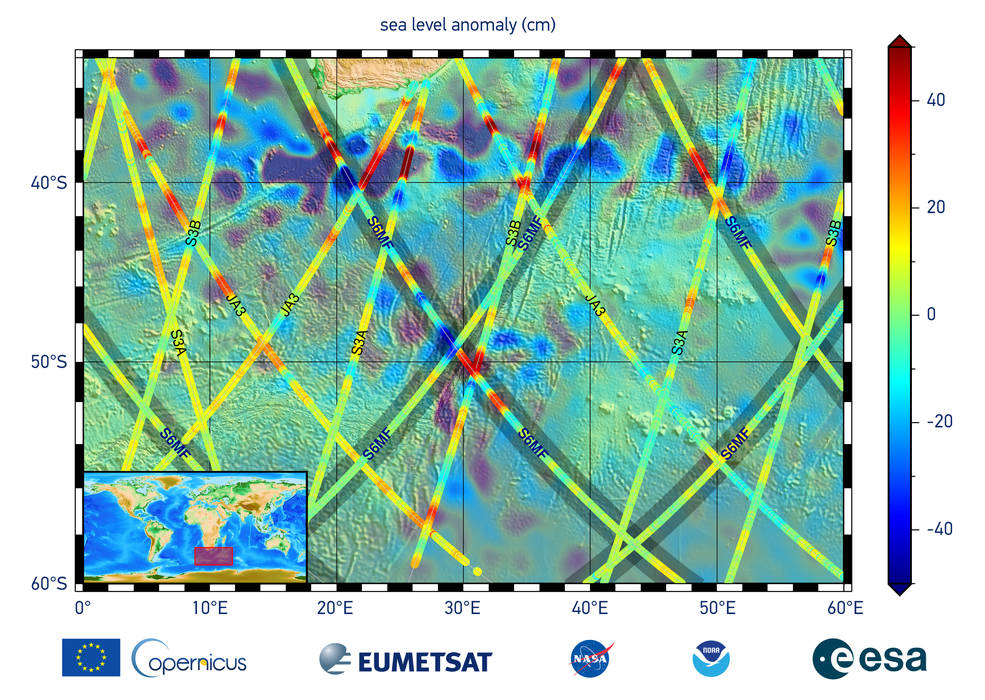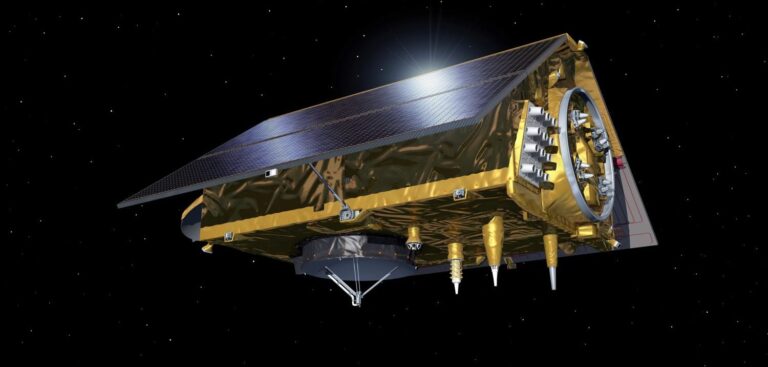Sentinel-6 Michael Freilich, the joint US-European satellite built to measure global sea surface height, has sent back its first measurements, providing information on sea surface height, wave height, and windspeed off the southern tip of Africa.
“We’re excited for Sentinel-6 Michael Freilich to begin its critical work studying sea level and helping us understand the many aspects of our planet’s global ocean,” said Thomas Zurbuchen, NASA’s associate administrator for science at the agency’s headquarters in Washington. “I know Mike [Freilich] would be thrilled that the satellite bearing his name has begun operating, but he’d also be looking forward to studying the data from this important mission, as we all are.”
Since the successful November 21 launch from Vandenberg Air Force Base in California aboard a Space-X Falcon 9 rocket, engineers and scientists have spent several weeks switching on and checking out the satellite and its instruments, making sure everything is operating as it should.
“Data from Sentinel-6 Michael Freilich will help us evaluate how the Earth is changing,” explained Karen St Germain, director of NASA’s Earth Science Division. “When we combine the data from instruments like the altimeter on Sentinel-6 Michael Freilich with data from other satellites like GRACE-FO and IceSat-2, we can tell how much of the sea level rise is due to melting ice and how much is due to expansion as the oceans warm. Understanding these underlying physical mechanisms is what allows NASA to improve projections of future sea level rise.”
The initial orbit for Sentinel-6 Michael Freilich was 11.4 miles (18.4km) lower than its ultimate operational orbit of 830 miles (1,336km) above Earth. Engineers plan to move the satellite into its operational orbit by mid-December, where it will trail the Jason-3 satellite by 30 seconds. During this tandem flight, scientists and engineers will spend the next 6-12 months cross calibrating the data collected by both satellites to ensure the continuity of measurements between the two. Once assured of the data quality, Sentinel-6 Michael Freilich will then become the primary sea level satellite. The first publicly available sea level data will be available in about six months, with the rest available within a year.
“We are now gearing up the operational systems supporting the processing of the instruments’ data by EUMETSAT and partner organizations, as they are all contributing to this complex process,” said Manfred Lugert, program manager for the Sentinel-6/Jason-CS (Continuity of Service) mission at the European Organisation for the Exploitation of Meteorological Satellites (EUMETSAT). “This will keep us busy for the next few months, as the independent scientific validation and fine-tuning need to be undertaken very carefully.” Lugert expects the first operational products from the mission would be available to those who need them by mid-2021.
In addition to measuring sea level, the satellite is also monitoring atmospheric temperature and humidity, which will help improve weather and hurricane forecasts.




